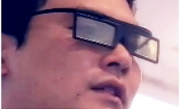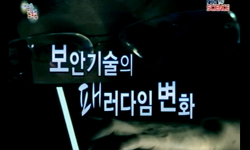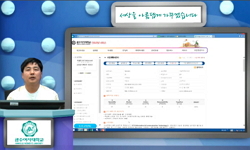실과교육의 연구 내용은 실과 교과 내용을 중심으로 이뤄져서 학문의 정립이 어려워지고 있으며 학문적 계열성의 혼미로 인한 이론 재정립이 필요하다는 선행연구에 따라 실과교육이론의 ...
http://chineseinput.net/에서 pinyin(병음)방식으로 중국어를 변환할 수 있습니다.
변환된 중국어를 복사하여 사용하시면 됩니다.
- 中文 을 입력하시려면 zhongwen을 입력하시고 space를누르시면됩니다.
- 北京 을 입력하시려면 beijing을 입력하시고 space를 누르시면 됩니다.
기술을 축으로 하는 실과교육 이론의 패러다임 개선에 관한 연구 = (A) Study on the enhancement of the paradigm of the practical arts education theories which on axis technology
한글로보기https://www.riss.kr/link?id=T8591066
- 저자
-
발행사항
서울: 서울교육대학교 교육대학원, 2003
-
학위논문사항
학위논문(석사)-- 서울교육대학교 교육대학원: 초등실과교육 2003
-
발행연도
2003
-
작성언어
한국어
- 주제어
-
KDC
507.3
-
발행국(도시)
서울
-
형태사항
viii,105p.: 삽도; 26cm.
-
일반주기명
참고문헌 : p.102-105
- 소장기관
-
0
상세조회 -
0
다운로드
부가정보
국문 초록 (Abstract)
실과교육의 연구 내용은 실과 교과 내용을 중심으로 이뤄져서 학문의 정립이 어려워지고 있으며 학문적 계열성의 혼미로 인한 이론 재정립이 필요하다는 선행연구에 따라 실과교육이론의 패러다임을 재정립하였다.
1. 실과교육은 기술과학의 지식을 생활에 응용함으로서 인간 삶의 질 향상을 추구하는 교과로 정의할 수 있다.
2. 실과교육의 성격은 내재적으로 기술과학을 익히고 이를 응용하며, 외재적으로 현실생활과 미래생활을 대비하는 직업적 소양, 직업준비 교육, 진로 교육 등을 추구한다.
3. 실과교육의 학문적 구조는 학문 분류를 기준으로 기술과학과 교육학의 교집합적 구조이다.
4. 실과교육의 철학적 배경은 ‘노작교육’(기능적·신체적·물리적 기술)보다는 지식을 실생활에 응용하는 ‘응용교육’(과학적·이지적·이론적 기술)이며 이와 같은 응용,활용과정에서 노작이 발생한다. 또한 실학사상,실용주의는 당시대의 철학사조(思潮)이며 실과교과와는 특별한 관련이 없다.
5. 실과교육의 영문표기명은 'Technology Education'로 변경되어야 한다.실과교육의 국문표기명은 ‘기술과학교육’으로 변경되어야 한다.
6. 실과교육의 이원분류는 지식, 응용, 태도로 구분한다.
7. 실과교육의 내용체계를 ‘지식’과 ‘응용'으로 나누고 ‘지식’ 에서는 가정, 기계·건축·전기·전자, 생명·환경, 정보·통신 등으로 설정하고 ‘응용’ 분야에서는 ‘응용과정’으로 실과적 문제 인식, 실과적 해결방안 탐색, 실과적 직업 탐색등을 선정하고 ‘응용활동’으로 고안하기·만들기(기존/창조·발명), 다루기, 가꾸기·기르기, 건사하기, 상품의 구매등을 선정한다.
8. 중등의 실과(기술․가정)는 영역간의 문제를 지양하고 학문적 논의가 있어야 한다.
다국어 초록 (Multilingual Abstract)
Earlier studies show that it's increasingly difficult to develop practical arts into one of disciplines as existing research just focused on what to teach in that class, and they also suggest that its theories should be rearranged since there was no c...
Earlier studies show that it's increasingly difficult to develop practical arts into one of disciplines as existing research just focused on what to teach in that class, and they also suggest that its theories should be rearranged since there was no clear definition about its academic nature. The purpose of this study was, therefore, to build a new paradigm for practical arts education theories.
The findings of this study were as below:
1. Practical arts education could be defined as a subject to apply technological knowledge to our everyday life in pursuit of a better quality of human life.
2. Regarding its nature, it internally aims to acquire and apply technology, and externally, it focuses on vocational training, occupational education and career education in preparation of present and future life.
3. In terms of academic structure, practical arts can be said as a combination of technology and education.
4. Practical arts is philosophically built on applied education(scientific, intellectual and theoretical technology) that applies knowledge to daily living, rather than on labor education(functional, physical and material- istic knowledge). Labor takes place in the course of application or utilization. The positivism and pragmatism, which were part of the past major trend of philosophy, had little relations to practical arts.
5. Practical arts education should newly be called technology education in English, and in Korean, a translation of the new English title should be used.
6. Practical arts education should be divided into three areas: knowledge, application and attitude.
7. Its content system should be composed of knowledge and application. The former section should include home economics, mecha- nics/architecture/electricity/electronics, life/environment, and information/ communication. The application section should be constituted by process and activity subareas. The process segment should deal with problem identifying, solution finding, and exploring related occupations. In the activity subarea, the types of activities to devise, make, create, invent, handle, raise or keep things and buy products should be implemented.
8. In secondary practical arts education(technology and home economics), specific matters related to different areas should be avoided, and more academic approach is called for.
목차 (Table of Contents)
- 목차
- 논문요약 = ⅴ
- 외국어 초록 = ⅶ
- Ⅰ. 서론 = 1
- 1. 연구의 필요성 및 목적 = 1
- 목차
- 논문요약 = ⅴ
- 외국어 초록 = ⅶ
- Ⅰ. 서론 = 1
- 1. 연구의 필요성 및 목적 = 1
- 2. 연구의 내용 = 2
- 3. 연구방법 및 절차 = 2
- 4. 연구의 제한 = 3
- Ⅱ. 이론적 배경 = 5
- 1. 학문의 분류와 문헌분류 = 5
- 2. 자료 분류법 = 5
- 3. 순수학문과 응용학문/과학,공학,기술 = 25
- 4. 실과 교육과 관련된 사전적 정의 = 31
- Ⅲ. 본론 = 46
- 1. 실과 교육의 개념 = 46
- 2. 실과 교육의 성격 = 59
- 3. 실과 교육의 학문적 구조 = 65
- 4. 실과 교육의 철학적 기초 = 79
- 5. 실과 교육의 영문 및 국문 표기명 = 83
- 6. 실과 교육의 이원분류 = 92
- 7. 실과 교육의 내용체계 = 94
- 8. 중등 실과 (기술·가정)영역 개선 = 95
- Ⅳ. 결론 및 제언 = 101
- 참고문헌 = 102












